The B2B buyer is younger, digital-first, and dominates the share of voice online. They expect a seamless experience pre- and post-sale and want to actively shape your products and services.
Our guide reveals what today’s decision-makers want, how to target them, and proven B2B programmatic advertising strategies for reaching more leads and closing deals.
What is B2B programmatic advertising?
B2B programmatic advertising is the automated buying and selling of online advertising space. Using data-driven technology like algorithms and real-time bidding, it delivers ads to the right B2B audience at the right time across various digital channels.
How Does B2B Programmatic Advertising Work?
B2B programmatic advertising uses data to display targeted ads to businesses automatically.
Here’s a quick overview:
- Data & Targeting: Define your ideal customer using First-Party data (CRM, website analytics), Third-Party data, and other sources, like business intelligence.
- Demand-Side Platforms (DSPs): Set up and manage campaigns targeting specific audiences on DSPs.
- Supply-Side Platforms (SSPs): Publishers sell ad inventory, connecting to ad exchanges for bidding.
- Real-time Bidding (RTB): Ad platforms compete for ad space in milliseconds when a user visits a site.
- Private Marketplace (PMP) & Programmatic Direct: Direct deals with websites for more control.
- Ad Serving & Delivery: The winning ad is shown to the targeted user.
- Tracking Results: Monitor metrics like clicks to measure success and adjust campaigns as needed.
12 B2B Programmatic Advertising Strategies for Success
Millennials and Gen Z now make up 71% of B2B buyers. B2B brands must adjust their strategies to cater to younger consumers’ distinct buying habits and expectations without neglecting older demographics.
1. Master Audience Insights with First-Party & CRM Data
B2B buyers are a niche audience. Their interests and needs are far more specific than a generic consumer demographic. A thorough audience understanding should come from extensive qualitative research with multiple audience personas, moving away from a narrow definition of the ideal customer.
Why do B2B brands need multiple audience personas?
“[With buyer personas], there’s a misguided focus on demographics, arbitrarily chosen stock photos, and cutesy alliterative names. Your customer’s gender rarely has anything [to] do with their purchase decision, and it doesn’t matter if you name them Marketing Martin or Finance Fiona. Instead, I’ll argue that it’s more helpful to create personas across marketing disciplines — a group of audience personas, if you will. A group of audience personas would serve as various “ideal customer profiles” across your marketing functions.”
This is where two key data sources come into play: First-Party (1P) website data and modeled CRM data.
First-Party Data
Use First-Party data for precise audience targeting, personalized messaging, and geographic customization. First-Party data comes from CRM systems, website analytics, purchase history, and user interactions.
- Behavioral Targeting: Tailor ad creatives based on user engagement with specific pages and content.
Example: If users frequently visit your blog on marketing automation, create ads highlighting your automation solutions. - Personalized Messaging: Craft ads based on a user’s website journey.
Example: Show ads about advanced analytics features to users who visit your analytics tool page often. - Geographic Customization: Customize your ads based on your users’ geographic locations. Different locations may have different needs and offers.
Example: Promoting hurricane services in Florida and flood services in Michigan.
CRM Data
Turn your CRM data into action to uncover your ideal B2B customers. Activating modeled CRM data involves finding past website visitors interested in your offerings and using detailed data from on-site interactions to refine audience targeting.
Example: You’re targeting healthcare professionals in the private equity (PE) sector. CRM data on downloads and content engagement reveals interested users. Use this data to craft targeted campaigns that speak directly to their needs.
Lookalike Modeling
Use existing customer data to find individuals with similar characteristics. This extends your reach to new potential customers who resemble your current audience.
Refine your messaging and targeting by testing different ad variations on lookalike audiences for greater success.
2. Develop Compelling Website Messaging to Win Customers & Differentiate Your Product
B2B buyers are risk-averse. The stakes are higher in B2B than in B2C transactions, which involve larger volumes, more money, and intricate negotiations.
75% of US B2B purchasers use online platforms, including websites, for product discovery and buying. That far outpaces B2B marketplaces (65%), in-store/at vendors’ warehouses (53%), sales representatives (44%), and social media channels (20%).
Your website must clearly communicate your message, value, and competitive edge.
Should B2B digital advertising messaging be aimed at a client’s company, ultimately reaching the same audience as consumer marketing efforts?
“Business-to-business work is about building a brand from the inside out. The brand message that we communicate to our clients’ business constituents is often the same message that is then carried through to the consumers in the marketplace.”
Wynter suggests thinking of messaging in layers, like an onion, with five components for crafting and measuring effective messages. Each layer builds on the others.
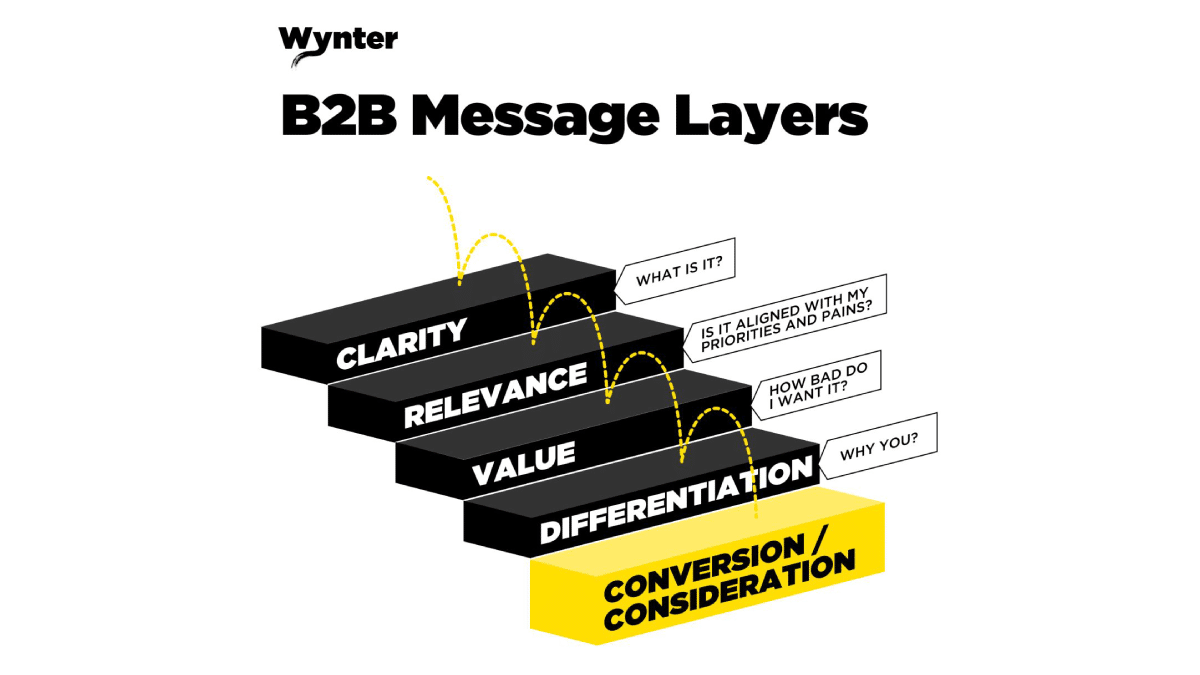
- Clarity: Clearly state your product/service and its benefits in simple language.
- Relevance: Tailor content to your target audience’s needs and pain points.
- Value: Highlight the value proposition with case studies, testimonials, and data.
- Differentiation: Emphasize what sets your product apart from competitors.
- Conversion: Use clear CTAs to guide users to take the next step (e.g., sign up, download, contact).
Make your buyer’s journey as easy and frictionless as possible. 31% of B2B shoppers say technical website issues prevent them from completing a purchase.
Tailor Your Message to Different Customer Segments
Sending a generic message won’t resonate with your audience’s unique needs.
Segment your research and competitive analysis by customer group. Identify each segment’s top challenges, then craft targeted messaging that speaks directly to those specific needs.
Then, narrow in on the challenge that each audience segment prioritizes most and build messaging for each.
Process.st, a B2B process management software, tailors its message to different audience segments. Its operations page speaks to reducing errors, and its healthcare page focuses on superior patient outcomes.
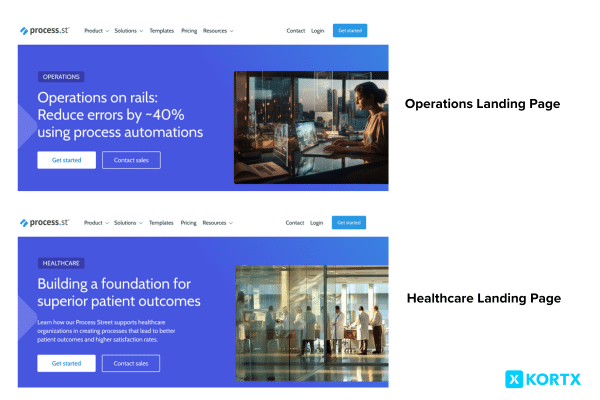
Faire, an online marketplace for retailers and brands, showcases products for different business types on its homepage below the fold.
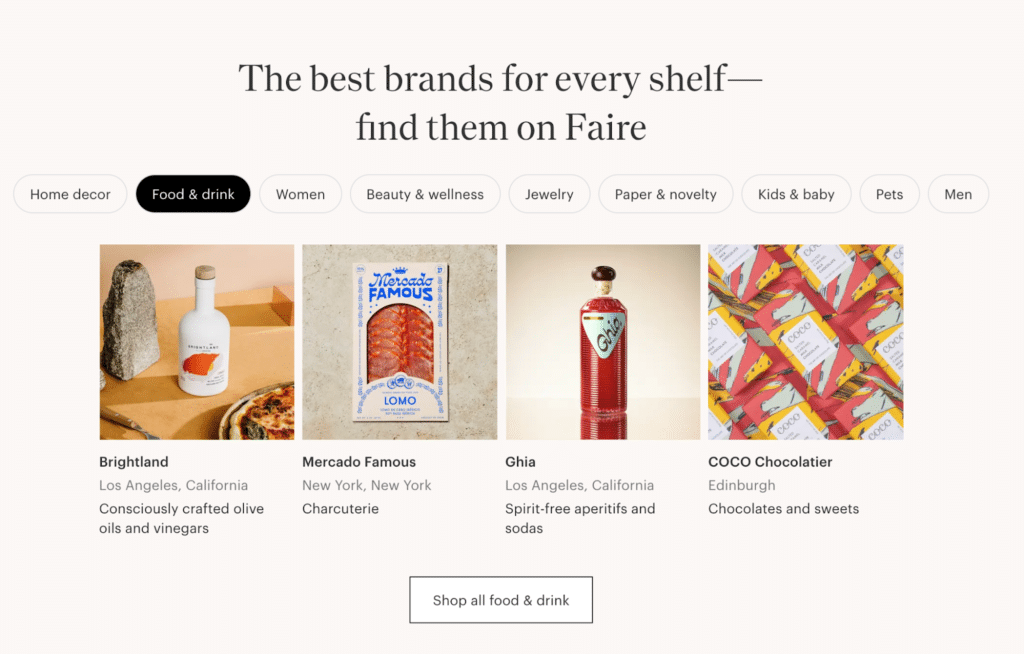
What is one piece of messaging advice you would give to B2B brands who are writing their own ad messaging and copy?
“Most marketing problems are copywriting problems in disguise. And the big copywriting problem B2B companies run into is trying to convey too much, too soon. You could have a beautiful 12-course meal for them to enjoy – but if you dump it on their plate all at once, they’ll lose their appetite. Instead, think about it like a sushi train. Feed them one piece of digestible information at a time. Because when you do, you’ll leave them hungry for more.
Airtable is a good example. Their product has many features and functions. Too many. They tried to capture it all with their homepage headline “Connect Everything. Achieve Anything.” But, it meant nothing to no one.
They’ve now embraced the sushi train approach by leading with the most compelling use case. Their headline is now “The fastest way to build apps.”
3. Craft Strong Creative Visuals & Messages That Propel Action
Well-crafted creative and copy should address viewers’ challenges, highlight your expertise, and compel engagement.
Ad Copy Examples: Good vs. Bad
- Ineffective: “Our software is the best.” (Vague)
- Effective: “Increase sales efficiency by 20% with our AI-powered CRM.” (Specific, quantifiable)
Create multiple ad versions with different headlines, visuals, and CTAs. Videos can explain your brand’s value if you have a complicated product or service.
Always tell users what to do next (“Get Quote”) and what they get (“Lease Cars Now”). This avoids generic messages and users understand how to engage.

Detroit Edison (DTE) is a B2B and B2C electricity company that tailors its ads to communicate different aspects of its services: empowering customers to take control of their repairs, showcasing its own expertise, and introducing its Home Protection Plus plan.
Elements to Tweak:
- Headlines: Experiment with different angles and keywords.
- Visuals: Test photos, illustrations, and data visualizations.
- Body Text: Highlight features, benefits, or success stories. Tailor language for specific audiences.
- CTA: Use strong verbs and urgency (e.g., “Start Now!”). Point to our blog post for more CTA examples.
- Landing Pages: A/B test different landing pages with slightly different messaging or offers to see which one converts better for each audience segment.
📚 Related article: 7 Call to Action (CTA) Examples & How to Write Them
Learn the elements of writing a CTA that converts.
Dynamic Creative
Tailor the visual design and messages to specific locations or audience segments for higher engagement.
B2B buyers seek solutions. Your ad creatives should directly address their needs and prompt action.
What can marketers do when their media plans are solid, but the creative content isn’t generating the desired results?
“Often, we can put together the best media plan, but bland creative can limit its impact. We suggest clients provide at least 3 versions of their creatives. We can determine which ones perform best by testing variations in components like the headline, image, and call to action. This approach uses data to guide decisions without undermining the effort that went into the original creative. It’s a more constructive way to optimize results while respecting the work done to craft the ad creative.”
4. Tag Your Website to Uncover Deep User Insights
Traditional website analytics lack depth. They often focus on basic metrics like pageviews, which don’t always tell the whole story.
Marketing tags (code snippets) uncover deeper insights. They track user actions (beyond pageviews) and send data to analytics tools. This reveals:
- User Journey: How users interact and convert.
- Campaign Performance: Track conversions, engagement, and retention.
- Marketing Effectiveness: Analyze channels and campaigns for best results.
Beyond insights, data from tags lets you segment your audience based on their behavior and interactions. You can create personalized messages and campaigns tailored to specific interests.
You can quickly adjust your marketing strategies and campaigns with access to real-time data.
5. Implement a Lead Scoring System
B2B conversions aren’t always clear. Lead scoring is a method that ranks prospects based on their engagement with your brand. This reveals a prospect’s interest level even if they haven’t taken a “low funnel” action.
Each action a user takes on your site is assigned a score, and these scores help determine how likely a visitor is to become a customer. Examples include:
- Page Visits: Score for visits to product pages or pricing information.
- Downloads: Assign scores for downloading white papers or case studies.
- Form Submissions: Score for form fills, such as contact forms or demo requests.
- Video Views: Track how much of a product demo video a user watches.
Lead scoring thrives with a buyer journey map. Map the typical path to purchase, then tag user actions along the way. These tags feed your lead scoring system, accurately reflecting prospect interest.
Nurturing Leads Effectively
In B2B digital advertising, lead nurturing is crucial. It’s not just about automated follow-ups; it involves directing leads to the right person for effective follow-up. Too many automated follow-ups can cause potential clients to drop off. Therefore, integrating your lead scoring with a personalized approach to nurturing can significantly improve conversion rates.
Streamlining the User Journey
A strong message is only half the battle. Many websites lose potential customers with long, complex sign-up forms. Simplify your forms to prevent frustration and abandonment.
Simplify your forms to prevent frustration and abandonment. Only ask for what you need, like their name, email address, and industry. You can always ask for more details later. A simpler, faster process decreases sign-up friction.
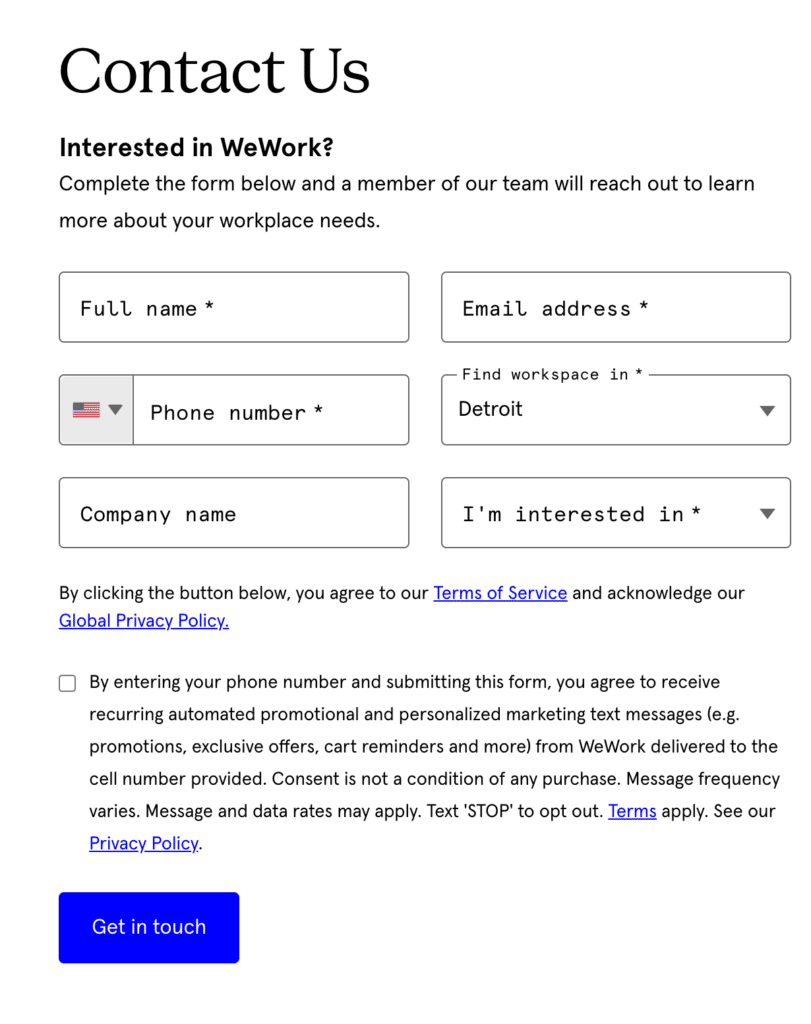
WeWork’s Contact Us page is simple. It only asks for a user’s name, email address, city, and the type of space they are interested in.
Know Your B2B Buyer Like Never Before
KORTX’s audience solutions can identify high-value leads, revealing the “who,” “why,” and “how” behind every click.
6. Use a Multichannel Social Strategy to Broaden Reach
While LinkedIn is the top B2B marketing network, a multichannel approach broadens reach. LinkedIn connects with industry professionals, TikTok engages younger audiences and generates views, Facebook leads in clickthrough rates, and YouTube offers significant ROI and influences B2B decisions.
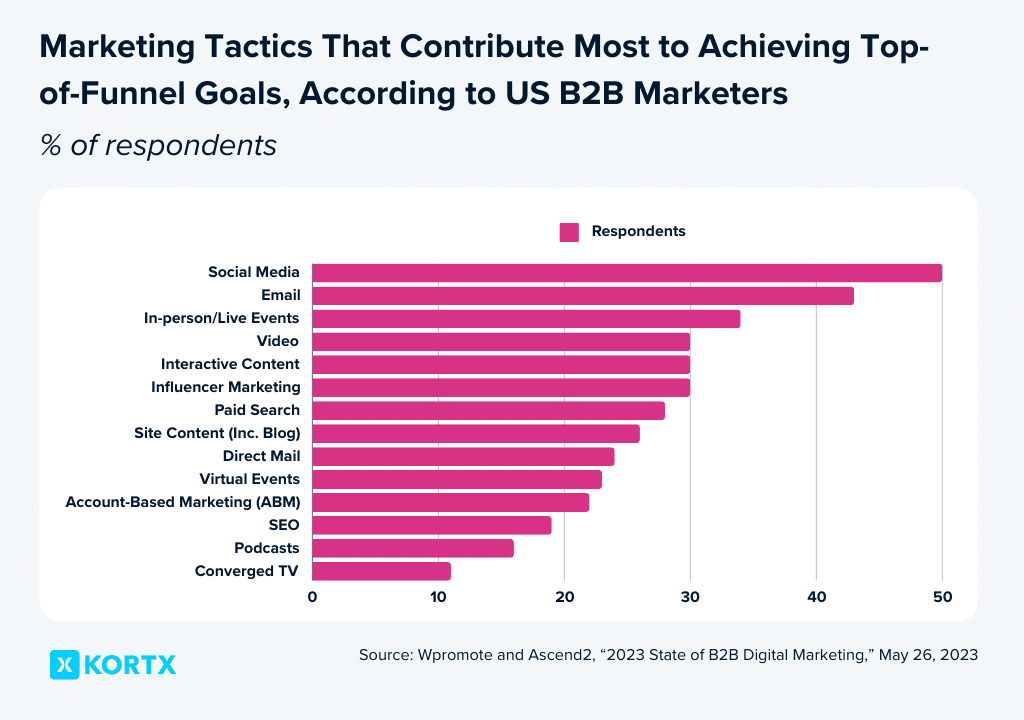
LinkedIn is the world’s largest professional network, with over 700 million members globally. Nearly 50% of business professionals prefer LinkedIn for industry-related content, and 91% of North American marketers consider it the most effective B2B channel.
Ads on LinkedIn appear in a professional context where users are already thinking about their careers and business needs, increasing the likelihood of engagement.
7. Incorporate Videos in Your Campaigns, Especially for Complex Products
US adults spend 3 hours, 11 minutes daily on online video, compared to 2 hours, 55 minutes on TV.
Utilizing video to explain your product can significantly enhance prospecting efforts, especially for complex solutions. Videos convey what your product does, how it works, and its benefits, attracting and converting prospects better than text alone.
Interactive video ads provide a more engaging experience through various components, such as borders, hotspots, shoppable features, and more.
Review the basics of interactive video ads, including high-quality examples of using them in your online video advertising campaigns.
Complement videos with lower-funnel tactics. Rich media display ads can retarget viewers who watched your video to reinforce your message and encourage action. Then, use LinkedIn to advertise your brand with video content to reach decision-makers and influencers.

Rich media ads use interactive and dynamic visuals like text, video, images, audio, and animation to grab the audience’s attention.
8. Tailor Ad Delivery to Align with Site Traffic Insights
B2B site traffic commonly declines from Friday to Sunday, as potential customers are likely not researching business solutions on their days off. Monday through Thursday typically have the highest traffic since users are at work, so tailoring your delivery to these insights can enhance engagement and effectiveness.

A client screenshot in Kampus shows how variable different days are.
Strategies to Address B2B Weekend Traffic Lulls
- Schedule Campaigns: Focus marketing efforts from Monday to Thursday to maximize visibility during peak traffic times.
- Retargeting: Run retargeting ads on streaming services (CTV), social media platforms, and other channels they frequent during evenings and weekends. This way, you can reconnect with potential customers when they’re more likely to browse for what you offer.
- Weekend Content: Create specific content for weekends, such as engaging or educational material for users during their downtime.
- Monitor & Adjust: Monitor site traffic and adjust strategies based on data, adapting to any trend changes.
Tailoring your delivery to these insights ensures campaigns reach the right audience at the right time.
9. Use a Full-Funnel CTV Strategy to Drive Leads to Content
With CTV, B2B brands can reach specific professional audiences beyond the capabilities of traditional paid search and social channels.
Does CTV work for B2B brands?
“CTV traditionally has been perceived as a B2C channel due to its broad reach and usage in delivering consumer-focused advertising via television formats. However, this perception is changing as B2B advertisers begin to recognize the potential for targeting specific professional audiences through CTV’s advanced targeting capabilities. Brand awareness CTV campaigns can capture the right prospects at the top of your funnel and drive them to content or a demo request.”
Take a full-funnel approach by using CTV to drive awareness and conversion. Combine native, display, video, programmatic audio, and interactive ads with CTV to target customers across media formats and devices. CTV’s in-flight reporting allows immediate campaign optimization.
Prove its value to stakeholders by monitoring ROAS (Return On Ad Spend), linking exposure to real-world results, and using brand-lift studies to measure impact on awareness, ad recall, and purchase intent.
10. Complement Your Ad Strategies with Programmatic Audio
Programmatic audio ads successfully reach niche B2B audiences by aligning with their listening habits. For example, a software company can use audio ads during a tech podcast to explain product benefits non-intrusively.
The podcast Acquired, popular among top executives and decision-makers, allows sponsors to reach an influential audience. It explores the stories of successful companies and business strategies.
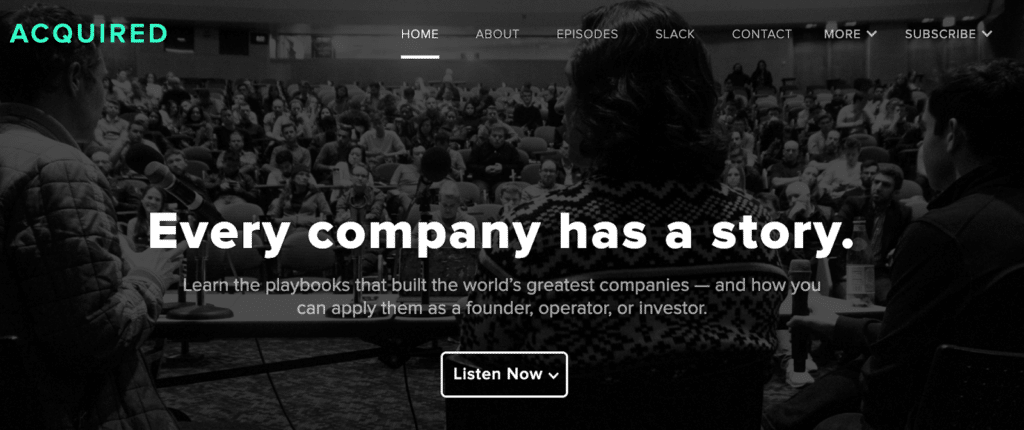
By associating with a respected podcast like Acquired, advertisers benefit from a halo effect, enhancing their brand’s credibility and trustworthiness.
Learn how to improve your brand’s presence, boost brand awareness, and deepen consumer engagement with programmatic audio.
11. Use Influencers to Foster Engagement in Online Communities
B2B influencer marketing is unique. Like thought leaders, B2B influencers are trusted experts with significant sway in convincing their audiences to purchase.
It’s a great full-funnel strategy. B2B marketers find influencer marketing effective for top-of-funnel (30%) and bottom-of-funnel (25%) goals.
Core B2B Influencer Types
- Thought Leaders: Industry experts who influence purchasing decisions.
Example: Chris Walker, CEO at Refine Labs and Passetto - Micro-Influencers: Influencers with fewer than 100,000 followers, offering cost-effective, targeted campaigns.
Example: Anthony Garone, Founder of Edify Content - Corporate Influencers: Employees who act as social media ambassadors, sharing expertise and brand experiences.
Example: Andreas von der Heydt, Board Member, Tchibo
How to Leverage B2B Influencers
- Identify Relevant Influencers: Find thought leaders, micro-influencers, and corporate influencers aligned with your industry and audience.
- Engage with Authentic Content: Collaborate on valuable content like blog posts, webinars, and social media posts that address audience pain points.
- Try Multiple Channels: Use influencers across LinkedIn, X, and industry forums to maximize reach and engagement.
12. Integrate Generative AI (GenAI) for Content Creation (But Stay Human-Centric)
While AI for bid decisions and optimization has existed for some time, GenAI is changing how B2B brands create content like ads and email campaigns.
GenAI helps brands save time and costs, with two-thirds (66%) of marketers reporting a positive ROI (return on investment), increased cost efficiency, improved performance, and faster creative cycles.
Example: Rippler Group
An early-stage B2B SaaS client of Rippler Group uses HubSpot’s ChatSpot.ai to analyze data and identify highly satisfied and engaged customers.
57% of B2B content marketers struggle to create the right content and 54% struggle with consistency and differentiation. Generative AI helps overcome these challenges. Over half (51%) use generative AI for brainstorming, and 45% use it for researching headlines, keywords, and writing drafts.

AI content creation isn’t foolproof and needs accuracy, attribution, and emotion guidelines. In people-oriented roles like Sales or Account Management, GenAI may struggle with complex situations, empathy, and specific domain knowledge.
Balancing GenAI with Human Interaction
GenAI should support, not replace, human interactions. Poorly generated content can damage your brand’s reputation, as many consumers would switch brands after a bad experience with AI-generated content.
Focus on storytelling, emotional appeal, and relatable narratives from thought leaders and influencers. Also, live events, webinars, and video sessions provide personal engagement, balancing the digital noise and AI-driven interactions.
13. Centralize Your Data to Maintain Gain Valuable Customer Insights From Large Datasets
Data maturity is key, especially with budget limits, privacy worries, and more AI use. Marketers must collect, store, and use data effectively to personalize campaigns and gain valuable customer insights from large datasets.
Ensuring Data Consistency
Achieving data consistency is very important for maintaining brand integrity and delivering cohesive customer experiences. Marketers can accomplish this by using a centralized data management system that:
- Enhances Efficiency: Streamlines data storage and access, reducing redundancies and improving workflow.
- Improves Accuracy: Ensures that all departments work from the same data set, minimizing discrepancies and errors.
- Facilitates Real-Time Insights: Provides quick access to up-to-date information, enabling timely and informed decision-making.
- Strengthens Brand Integrity: Consistent data across all touchpoints ensures that the brand message remains uniform and reliable.
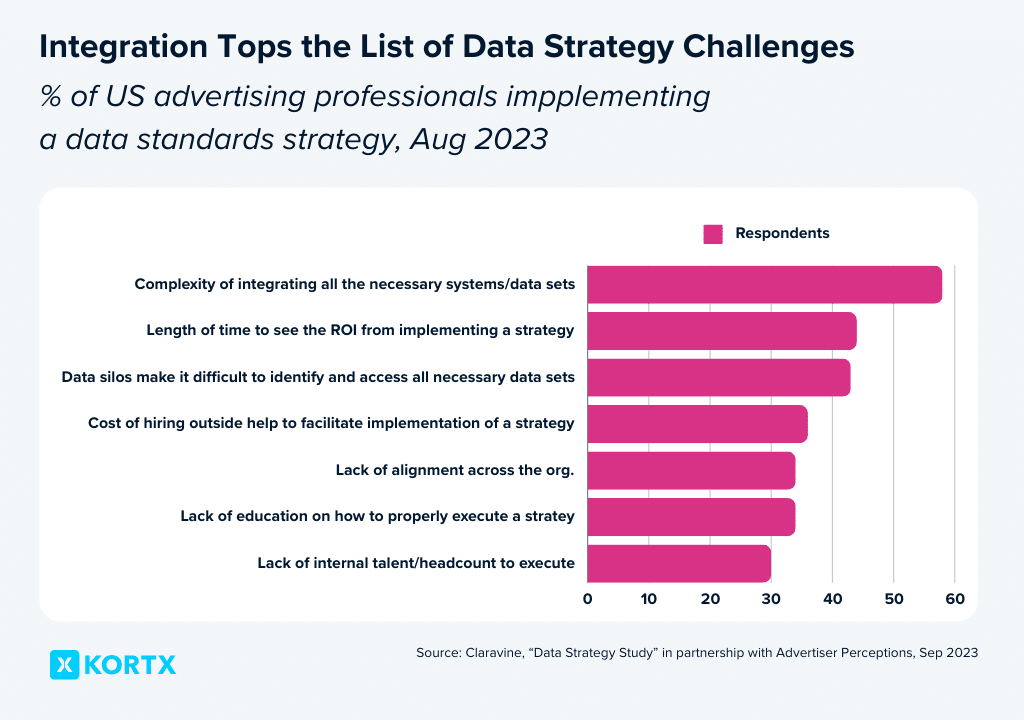
KORTX’s Kampus helps marketers overcome data management challenges by providing a centralized data integration and management platform.
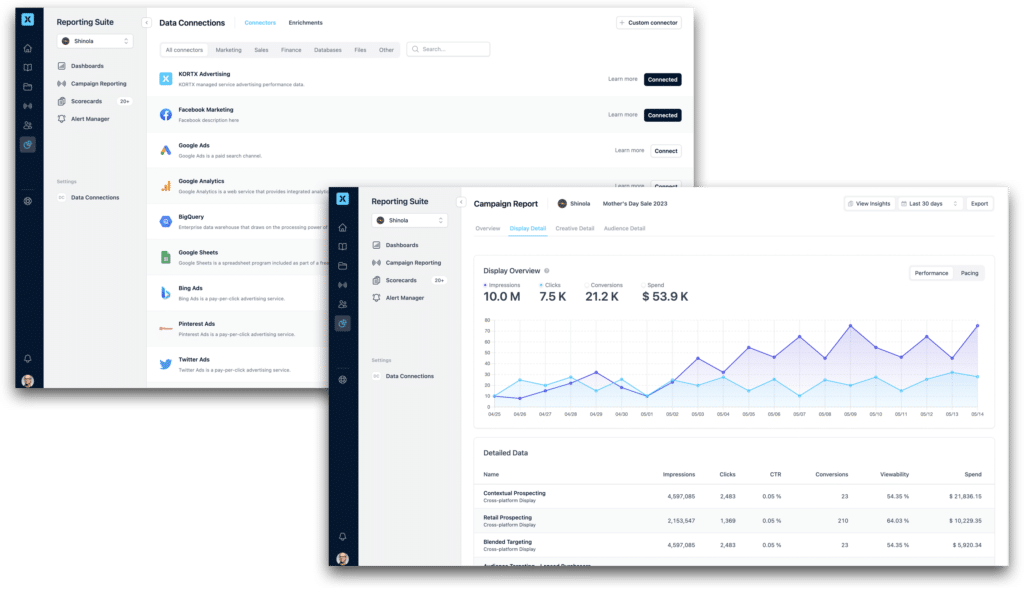
Consolidating marketing information improves efficiency, accuracy, and strategic decision-making, leading to better results.
The Foundation for Successful B2B Marketing
The B2B buyer may have changed, but the core principles of successful marketing remain. Embrace new technologies like GenAI responsibly and prioritize human connection to build trust and close deals. The future of B2B marketing is all about building human relationships, and programmatic advertising can help you do just that.
About the Author
Maria Wittbold is a Senior Account Manager and Team Lead at KORTX. Outside of work, she loves spending time with family, friends, and her four-legged son, Garth.






